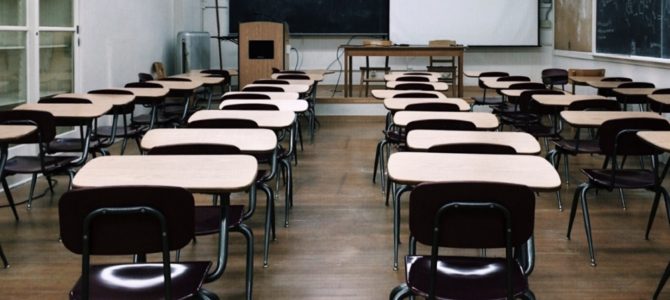
In his continuing effort to appease the far left, President Biden is looking at re-implementing race-based school discipline policies from the Obama administration. Based on the assumption that differences in suspension and expulsion rates along racial lines must indicate racism, the U.S. Department of Education issued guidance that led schools to implement discipline quotas based on the color of a student’s skin.
As a result of this guidance, suspension rates fell across the country. This policy was reversed under President Trump, but the current administration is ready to bring them back.
To claim differences in suspension rates by racial group are wholly the result of racism is based on shaky evidence at best. As has been pointed out by Heather MacDonald, once prior student behavior is accounted for, the effect of race on suspensions largely disappears, according to research published in the Journal of Criminal Justice.
Research that has compared student referrals to the principal’s office with eventual suspension rates has found no racial disparities. Such policies assuredly fit the Biden administration’s embrace of critical race theory in seeing racism in every disparate outcome. But these policies can have meaningful, negative effects on America’s kids.
A 2017 analysis by the Manhattan Institute compared student reports of safety before and after interventions that mandated reductions in suspensions. Naturally, students reported a decrease in safety and an increase in violence and drug use. Declining discipline can have spillover effects into other aspects of education.
In 2018, my employer conducted a deep dive into the effect of politically correct discipline policies on achievement in Wisconsin schools. Following the guidance from the Obama administration, school districts across Wisconsin began implementing a discipline program known as Positive Behavioral Supports and Interventions (PBIS).
Funded by the Department of Education, PBIS focuses on the use of so-called “restorative practices” in discipline rather than traditional methods like suspension and expulsion. Such practices might include bringing an injured student together with the student who caused the injury and having them determine how the situation should be rectified, perhaps ignoring the potential for intimidation, or ignoring a track record of misbehavior in the name of rehabilitation.
Under PBIS and similar programs, classroom disruptions became more common. Teachers reported that students were “punching, kicking, and even biting” them on a daily basis. Oftentimes, because of the federal push to limit suspensions for minority students, there were no consequences for even the most egregious actions.
According to a survey conducted by the University of Wisconsin at Madison, students increasingly reported they were not “always safe at school,” and were more likely to say that “violence is a problem in their school.” Worst of all, students increasingly reported that someone had hurt them at school within the last 12 months.
In one sense, these policies achieved their goal — districts that implemented these policies saw suspension rates fall at a faster rate than other districts in the state did. Yet districts that implemented the softer discipline policies promoted by PBIS also saw student test scores fall significantly relative to other districts in the state. The policies weren’t even effective at closing the racial suspension gap, as rates of suspension fell more steeply for white students.
This makes sense, as fostering a safe place for education is preeminent in creating an environment where learning can effectively take place. Research has found that students who feel unsafe at school have higher rates of absenteeism, and lower academic achievement overall. Unfortunately, because many American schools are racially segregated, the very students who are ostensibly meant to be helped by politically correct discipline will bear the brunt of the harm it imposes.
Such policies create an environment where not only students but teachers may feel unsafe. In Madison, Wisconsin — one of the farthest left cities in the United States — teachers were surveyed on whether they believed politically correct discipline policies were having a positive effect. Only 13 percent of teachers said that they were.
Horror stories abound nationwide of teachers who face students emboldened by a lack of consequences for misbehavior. Nearly 6 percent of teachers nationwide reported that they had been assaulted, according to a 2018 study. That’s one in twenty teachers.
As bad as the Obama administration was on discipline policy, it is likely that the Biden administration would be even worse. The administration has shown a willingness to implement overtly race-based policies in an effort to overcome the discrimination faced by past generations. Moreover, entirely new “intersectional” categories have been created since the end of the Obama administration against which the claim of broad discrimination by schools will no doubt be leveled.
It is perhaps the height of irony for the Biden administration, which seems to believe that public schools are beyond reproach to dismiss the need for school choice, to also insist that public schools are bastions of overt racism where black students are regularly discriminated against. Of course, discrimination exists in some limited contexts. But we ought not to sacrifice student safety wholesale in the name of political correctness.









